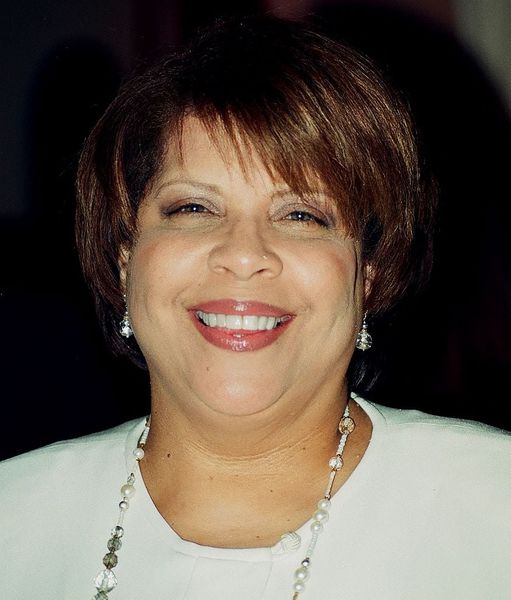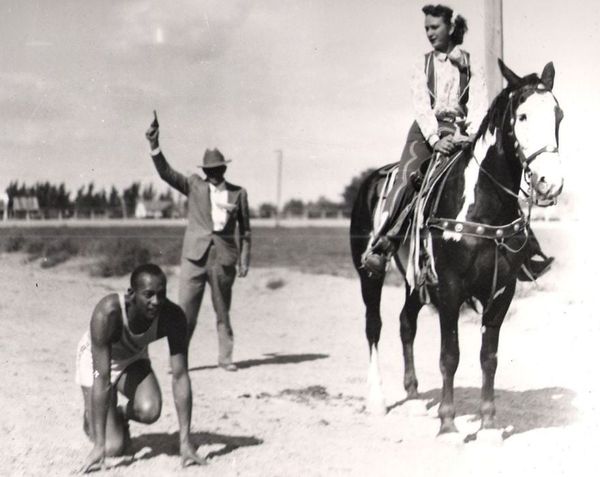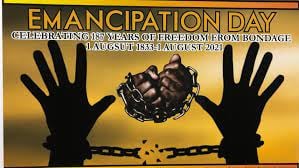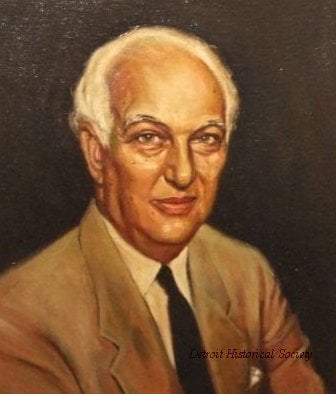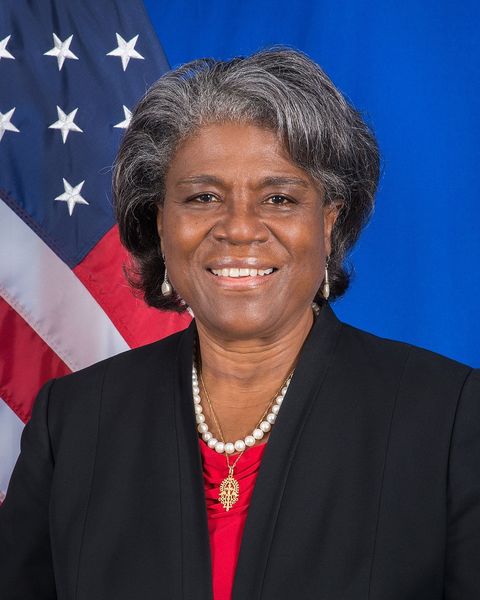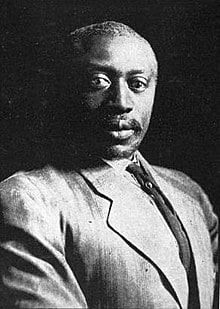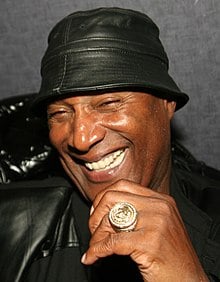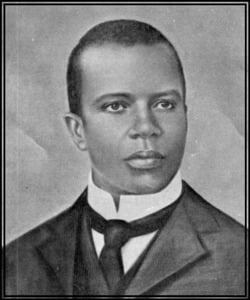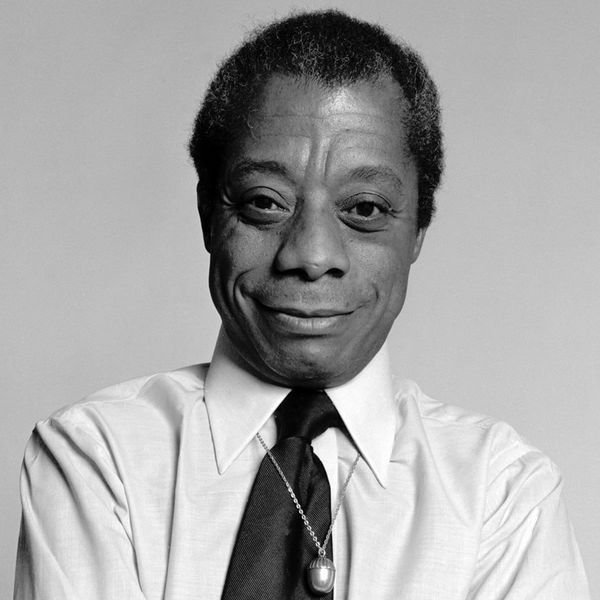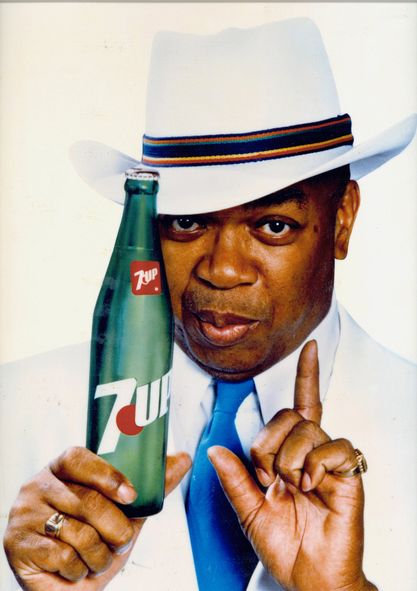GM – FBF – Today’s American Champion is an American R&B, pop, and jazz singer and songwriter.Today in our History – August 10, 1948 – Patti Austin was born.A sophisticated vocalist firmly grounded in jazz, Patti Austin enjoyed a period of stardom during the heyday of smooth, expertly produced rhythm-and blues music in the 1980s. Both before and since this period in the limelight, Austin continued challenging herself, balancing more introspective and/or artistic work with the commercial. Austin has been, in short, a professional’s professional.Austin was born in New York on August 10, 1948, and grew up in show business. Her father was a professional trombone player at the time. The family lived in Bayshore, Long Island. At the tender age of four she made her performing debut, singing a song called “Teach Me Tonight” on the stage of Harlem’s famed Apollo Theater during an appearance by vocalist Dinah Washington, who was also Austin’s godmother. A child star, she appeared on Sammy Davis, Jr.’s television variety show, worked on stage with such stars as Ray Bolger of The Wizard of Oz, and when she was nine she went to Europe with a group led by bandleader Quincy Jones, who would become an immensely influential figure both on Austin’s own career and on popular music.”My friends didn’t know I was in show business until I was 16,” said Austin. “The rest of the time, I never talked about it, because I wanted people to accept me for me, not based on whether I had a hit record or was highly visible or all that nonsense.”Austin’s first major series of appearances as a mature singer came when she was 16, when she went on tour with pop vocalist Harry Belafonte, then near the peak of his fame. This tour led to a fresh round of television appearances and to a three-year stint as a lounge singer for various international locations of the posh Intercontinental hotel chain. Austin’s first recordings were made during this period as well–for Coral Records in 1965. This material was reissued in 1999.With this wealth of professional experience under her belt before she could even vote, it was not difficult for Austin to decide on a musical career. Recording executives and producers valued the young singer’s know-how, and session-work opportunities began to flow her way.”The first session I did was for James Brown’s hit, ‘It’s a Man’s World,’ and when I got a nice juicy check from that,” Austin recalled in a biographical sketch released by the Concord Jazz label. “I said, ‘Hey let me do some more of this stuff.'” Austin became one of pop music’s leading session vocalists in the early 1970s, backing both R&B and pop vocalists such as Paul Simon, Roberta Flack, George Benson, and Cat Stevens. With her vocals included on the soundtracks of hundreds of television commercials, Austin became one of America’s most heard but least known singers.That began to change when Austin was signed to the jazz-oriented label CTI in 1976, thanks to contacts with industry veteran Creed Taylor and Belafonte’s former musical director Bill Eaton. The four albums Austin recorded for CTI helped to raise her profile in the industry and were widely appreciated by the architects of the “Quiet Storm” turn that black popular music took in the early 1980s. One of the albums, Havana Candy, was reissued in 1997 and favorably reviewed by Down Beat. The magazine pointed to “Austin’s appreciation of the jazz legacy as well as her love of various pop styles.”The dawn of the 1980s brought Austin some especially high-profile session assignments: she sang on Gaucho, the rock group Steely Dan’s complex exploration of the possibilities of soft rock, and, on a lighter note, appeared on the Blues Brothers album. She also enjoyed a hit single with “Razzmatazz” on Quincy Jones’s Grammy-winning 1980 LP The Dude, and in 1981 was signed to Jones’s Qwest label. That year, Austin’s Qwest debut album, Every Home Should Have One, finally brought her stardom thanks to her chart-topping duet with James Ingram, “Baby Come to Me.” The album was produced by Jones and Rod Temperton, the same team that would soon be responsible for Michael Jackson’s epochal Off the Wall and Thriller albums.”Baby Come to Me” was a perfect showcase for Austin’s vocals, which had taken on an exquisite silky quality that blended nicely with the smooth instrumental textures of the period. The song appealed to pop and urban listeners, and was adopted as the theme song of the television soap opera General Hospital. Austin and Ingram followed it up in 1983 with another successful duet, “How Do You Keep the Music Playing?”; part of the soundtrack of the film Best Friends, the song was nominated for an Oscar, and Austin and Ingram performed it on the Academy Awards television broadcast.Austin’s next Qwest album, Patti Austin, was released in 1984, but its assemblage of six separate producers failed to bring together a cohesive whole, and Rolling Stone complained that “except on the ballads, Austin’s powerful and technically proficient voice lacks distinction.” Two more albums for Qwest failed to reach the chart levels of Every Home Should Have One, and Austin’s career took a dip. She was also shaken by a house fire that destroyed nearly everything she owned and came within seconds of killing her elderly parents.The accident made Austin reexamine her priorities in life. Recalling her life atop the charts in the early 1980s in an interview with Essence, Austin said, “My main concerns were looking good, the parties I would attend and the size of the limousine that would take me to them.” Her star-studded circle of associates suddenly seemed less attractive: “Yes, they were the ‘happening’ people–on the charts and in the news–but they were miserable in their persistent bed-hoppings. They were all doing too many drugs and too much booze. They all had lots of stuff but not much soul or heart.” Austin scaled back, built a new home in upstate New York, and reconnected with some of her former jazz associates.Austin recorded a series of albums for the GRP label in the 1990s. One of them, Love Is Gonna Getcha, reunited her with Havana Candy producer and keyboardist Dave Grusin, and included the hit “Through the Test of Time.” Austin enjoyed a moderate radio presence through the decade, kept up a steady stream of television appearances, and reveled in praise from such luminaries as opera star Kathleen Battle. In 1998 she recorded the In & Out of Love album for the Concord Jazz label, and the following year moved to Intersound for Street of Dreams, a disc that allowed her to showcase her interpretations of some of her own favorite compositions. Stephen Thomas Erlewine of the All Music Guide called the album “a fine latter-day effort from a fine singer.”On the Way to Love was released in 2001. “The songs indulge in street argot here and there, but this is an upscale effort for the most part,” wrote William Ruhlmann in an All Music Guide review. “It’s not bad, but Austin can do much better.”In 2002, Sacramento Theatre Company premiered a production with the same title–On the Way to Love, a one-person show about Austin, starring Austin. This purportedly “grew out of a meeting with Peggy Shannon, the current artistic director of STC,” who had first met Austin a decade prior while working on Shakespeare’s Pericles for National Public Radio, according to Sacramento News & Review. “My challenge in this show is to tell Patti’s stories and dramatize them so that it’s not one long monologue with songs–because that’s a concert.” The production was scheduled to be performed in a couple of regional theatres with the goal being a Broadway run.Of her 2002 release For Ella, a tribute to Ella Fitzgerald recorded in Germany with the WDR Big Band, reviewers were more enthusiastic. “Austin had always had an ear for great material, and she possesses the interpretive tools to makes something special,” wrote Jazziz reviewer Mark Holston. Austin’s previous efforts at recording standards from the jazz canon he says “were compromised by cheesy, popish orchestrations…. There’s no scarcity of arresting performances on For Ella.”Ruhlmann said he considers this a sequel to The Real Me. “Austin does not, for the most part, attempt to sing in Fitzgerald’s style, giving listeners her own interpretations that, in Williams’ neo-swing arrangements, nevertheless hark back to the 1950s. … Austin is better off putting her own stamp on the songs; that she does very well.” She was nominated for a Grammy Award for this project and continued to tour in support of it into 2004.by James M. Manheim and Linda Dailey PaulsonMade debut appearance at age four with vocalist Dinah Washington, her godmother; traveled to Europe with bandleader Quincy Jones, age nine; toured with Harry Belafonte; became leading session and advertising-jingle vocalist, early 1970s; recorded debut LP, End of a Rainbow, 1976; recorded four albums for CTI label, late 1970s and early 1980s; signed with Qwest label, 1981; recorded smash Every Home Should Have One, which included single “Baby Come to Me,” a duet with James Ingram, 1981; released four albums on Qwest, 1980s; signed with GRP label, 1990; signed with Concord Jazz label, 1998; signed with Intersound label, 1999; premiered biographical one-woman show in Sacramento, 2002; released For Ella, 2002; nominated for a Grammy, 2003. Research more about this great American Champion and share it with your babies. Make it a champion day!
Month: August 2021
GM – FBF – Today’s American Champion at the 1936 Berlin Olympics, this African American track star won his fourth gold medal of the Games in the 4×100-meter relay.
GM – FBF – Today’s American Champion at the 1936 Berlin Olympics, this African American track star won his fourth gold medal of the Games in the 4×100-meter relay. His relay team set a new world record of 39.8 seconds, which held for 20 years.In their strong showing in track-and-field events at the XIth Olympiad, today’s American Champion and other African American athletes struck a propaganda blow against Nazi leader Adolf Hitler, who planned to use the Berlin Games as a showcase of supposed Aryan superiority.Today in our History – August 9, 1936 – Jesse Owens wins his forth gold medal at the XI Olympic Games held in Berlin, Germany.Born the son of Alabama sharecroppers in 1913, Owens emerged as a major track talent while attending high school in Cleveland, Ohio. Later, at Ohio State University, he demonstrated himself to be one of the greatest athletes in the world. In a single day of competition–May 25, 1935–Owens broke the world records for the 220-yard dash, the 220-yard low hurdles, and the running broad jump, and equaled the world record for the 100-yard dash. The next summer, Owens and 311 other American athletes, including 17 African Americans, traveled to Nazi Germany to represent the United States at the XIth Olympiad.In 1931, the International Olympic Committee awarded the 1936 Summer Olympics to Berlin. The choice was meant to signal Germany’s return to the world community after defeat in World War I. Two years later, however, Adolf Hitler came to power. He transformed the democratic German government into a one-party dictatorship, purged political opponents and suspected dissidents, instituted anti-Semitic policies, and began the remilitarization of Germany.Hitler initially held the Olympics in low regard because of their internationalism but became an avid supporter after Nazi propaganda minister Joseph Goebbels convinced him of their propaganda value. Seen as an opportunity to advance Nazi ideology, Hitler provided extensive funding for the Berlin Games, which promised to be the largest modern Olympics to date. The Nazi government used sport as part of its drive to strengthen the “Aryan race,” and “Non-Aryans”–Jewish, part-Jewish, or Gypsy athletes–were systematically excluded from Nazi-sponsored sports facilities and associations.By 1935, a number of athletic groups in the United States were pushing for a boycott of the Berlin Games, but after a heated debate U.S. participation was narrowly approved in December 1935. A number of prominent Jewish athletes in the United States and other countries decided to independently boycott the Games in protest of Nazi oppression of Jews. Spain also planned an alternate “People’s Olympics” to be held in Barcelona in July 1936, but the outbreak of the Spanish Civil War forced its cancellation. In the end, 49 nations sent some 4,000 athletes to the Summer Olympics in Berlin.Under international pressure, the Nazis agreed to allow one part-Jewish athlete on its Olympic team: fencer Helene Mayer. However, Joseph Goebbels forbid the Nazi-controlled German press from discussing the ethnicity of the blond-haired Mayer.On August 1, 1936, Adolf Hitler opened the XIth Olympiad. The Olympic ritual of a runner arriving bearing a torch carried by relay from Olympia, Greece, occurred for the first time. The Nazis advertised this ceremony as a symbol of the myth that German civilization was the inheritor of the glorified culture of ancient Greece.Olympic flags and swastika-bearing Nazi banners hung everywhere in Berlin. To prevent controversy, the anti-Jewish signs hung throughout the city were removed during the Games, and Jewish athletes and visitors from other countries were not subjected to anti-Jewish laws. Gypsies were cleared off the streets and interned in a camp at the edge of Berlin.A festive and hospitable atmosphere pervaded the German capital, and most tourists left the city with positive memories of their stay there.With 348 athletes, Germany had the largest national team and captured the most medals overall, greatly pleasing Hitler. The Americans, however, dominated the popular track-and-field events.On the first day of competition, Hitler, who had been congratulating German and select other winners, left the stadium shortly after three African Americans swept the high-jump event. Whether Hitler left to avoid shaking hands with non-Aryans is unclear. In the aftermath of the incident, Olympic organizers asked Hitler to either receive all the medal winners or none, and he chose the latter. Contrary to the popular myth, Hitler never directly snubbed Jesse Owens, but he did continue to privately receive German winners throughout the Games.With his four gold medals, Jesse Owens was the star of the Berlin Olympics. He equaled the world record (10.3 seconds) in the 100-meter race and broke the world records in the 200-meter race (20.7 seconds) and in the broad jump (26 feet 5 3/8 inches). He was enthusiastically applauded by the largely German crowd and developed a friendship with German long jumper and silver medalist Luz Long. However, he and other African American Olympians were demeaned by a Nazi newspaper that wrote of them as the “black auxiliaries” of the American team.On August 9, Owens won his fourth medal as a member of the mixed-race 4×100-meter relay team. The world-record-breaking triumph was tainted by the revelation that U.S. coaches had benched two American Jewish relay runners the day before the event. Marty Glickman and Sam Stoller were replaced with Owens and African American Ralph Metcalfe, the two best U.S. sprinters.However, both Stoller and Glickman had out-run Foy Draper, a white American who remained on the team, in a practice race. The coaches said Draper was more experienced, but Glickman and others thought that anti-Semitism was involved. Stoller, however, thought favoritism was to blame, as Draper and the fourth runner, Frank Wykoff, had trained under one of the Olympic coaches at the University of Southern California.Despite the embarrassment of seeing his best Aryan runners bested by African Americans, Adolf Hitler hailed the Berlin Olympics as a great success. He commissioned a German architect to design a colossal, 400,000-seat stadium at Nuremberg that would host Olympics for “all time to come.” The outbreak of World War II in 1939 prevented the building of the stadium, and by 1945 Hitler’s plans for Nazi world domination had ended in absolute defeat.In the decades of Cold War that followed, the United States and the Soviet Union exploited the propaganda potential of the Olympic Games as freely as the Nazis did at Berlin in 1936.Although only 23, Jesse Owens retired from amateur competition shortly after the Berlin Olympics in order to capitalize on his fame. Which took time, to feed his family he raced against horses at Monmouth Park, NJ and other horse tracks. This effectively brought his athletic career to an end.He later engaged in boys’-guidance activities, made goodwill visits to Asia for the U.S. Department of State, and served as secretary of the Illinois State Athletic Commission. He died in 1980. Research more about this great American Champion and share it with your babies. Make it a champion day!
GM – FBF – Today’s American Champion event is celebrated in a few states in the United States, here is one.
GM – FBF – Today’s American Champion event is celebrated in a few states in the United States, here is one. People came from far and near—train loads of people—to celebrate Homecoming. There was a parade. We were always in it with our decorated buggy and always won a prize. After the Parade everyone went to Porter’s Road [Bluff] Cave to celebrate where there were games, speaking, barbecues, and people had a great reunion.Today in our History – August 8, 1941 – Clarksville, TN. Celebrates Emancipation Day.“Today is not Friday the thirteenth,” read the August 8, 1941 issue of Clarksville’s Leaf-Chronicle, “but Friday the ‘eighth of August’ which is almost as unlucky for the housewives of the city.” “This is the day,” the column foreshadowed, “the faithful colored cooks and housemaids, nurses, etc. take the day off and the can opener comes into vogue.”The columnist’s patronizing lament was rightfully ominous. On this August 8th, as with the August 8ths of years’ prior, the black cooks and housemaids and nurses of Clarksville quit the homes of their white employers to celebrate the end of American slavery. While most black Americans post-Civil War observed Emancipation Day on January 1st, the day in 1863 when President Abraham Lincoln issued the Emancipation Proclamation, black residents of Clarksville and several other African American communities across Tennessee and western Kentucky chose August 8th to revel in their release from bondage.The reason for observing August 8th as opposed to January 1st or even September 22nd—the day Lincoln announced the preliminary Proclamation in 1862—remains speculative. Some note that Tennessee Military Governor Andrew Johnson freed his personal slaves on August 8, 1863, at his Greenville, Tennessee, farm. Interestingly, Sam Johnson, a former slave of Johnson, was a key organizer for the first recorded August 8th celebration in 1871. Others allege that enslaved people in Tennessee and Kentucky learned of the Emancipation Proclamation on August 8, 1863. However, pro-Union Kentucky and Union-occupied Tennessee did not fall under the provisions of the Proclamation which abolished slavery only in rebellious Confederate states. Regardless of its origins, the 8th of August, according to Clarksville historian Dr. Nancy J. Dawson, offered black people in the segregated South a place to be free together, especially from white racism.One of the earliest recorded August 8th celebrations in Clarksville occurred in 1898. Although black residents commemorated Emancipation Day on September 22nd the previous year, over 1,000 residents and visitors gathered at Porter Bluff Park on August 8, 1898, to parade through the greenway. With each subsequent gathering, the Eighth of August jubilees grew. Black townspeople flooded the city’s streetcars while several thousands of black residents from cities as far south as Nashville and as far north as Indianapolis bustled into the city by train, steamboat, buggy, horse, foot, and later by motor bus and car.As noon approached, a band headed a procession of decorated horse-drawn carriages and automobiles, floats, and various civic organizations through downtown. Later in the evening, the attendees picnicked and barbecued, danced to lively tunes, played baseball and other games, and listened to local orators discuss the harrowing journey from slavery to freedom. Emma E. Williams Burt, wife of the operator of Clarksville’s first hospital, Dr. Robert T. Burt, captured the wonder while reminiscing in 1984:Although the Eighth of August has waned in significance since the early twentieth-century, black Clarksvillians continue to celebrate the date, as do several communities on the western Tennessee-Kentucky border. In 2007, Governor Phil Bredesen signed House Bill No. 207 acknowledging August 8 as “Emancipation Day,” an annual day of special observance to recognize the freeing of Andrew Johnson’s personal slaves and “the significance of emancipation in the history of Tennessee.”
GM – FBF – Today’s American Champion was an American attorney, politician, and businessman, and the first African American appointed as a delegate to the United Nations.
GM – FBF – Today’s American Champion was an American attorney, politician, and businessman, and the first African American appointed as a delegate to the United Nations.Mahoney was also the first African American to serve on the Detroit Planning Commission, the Wayne County Board of Supervisors and the Michigan Labor Council.Today in our History – August 7, 1954 – Charles Henry Mahoney (May 29, 1886 – January 29, 1966) was confirmed by the Senate and became the First Black to serve as a full delegate to the United Nations.Mahoney was born in Decatur, Michigan, on May 29, 1886, to Barney, and his wife, Viora Simpson. Mahoney attended grade school in Decatur. He attended Olivet College where he was renowned by professors as giving the best speech in the history of the college. He later received his Bachelor of Arts degree from Fisk University, before going on to attend law school at the University of Michigan where he graduated in In 1918, Detroit Mayor James Couzens Mahoney to the Detroit City Planning Commission, the first African American to serve in such a capacity.In 1925, he was hired by the National Association for the Advancement of Colored People to be the defense attorney for Dr. Ossian Sweet and 10 other defendants who had been accused of murder, eventually serving as an associate attorney to Clarence Darrow who was later hired for the case. The case ended with Sweet’s acquittal. In 1928, Mahoney co-founded the Great Lakes Mutual Insurance Company, serving as the first President of the company until his departure in 1957. In 1939, he was appointed to the Michigan Department of Labor and Industry, by the Governor of Michigan, Frank Fitzgerald. On July 26, 1954, Mahoney was nominated by President Dwight D. Eisenhower to serve as part of a delegation to the ninth session of United Nations General Assembly, under the leadership of ambassador Henry Cabot Lodge Jr. Mahoney was confirmed by the U.S. Senate as part of the nine member delegation on August 7, 1954. In 1955, he helped organize the Public Bank of Detroit, becoming a member of its board of directors. Mahoney was a member of the Republican Party. He twice unsuccessfully campaigned for election to Congress. Mahoney died at the Henry Ford Hospital, in Detroit, Michigan, on January 29, 1966. He was buried at the Evergreen Cemetery in Detroit. Research more about this great American Champion and share it with your babies. Make it a champion day!
GM – FBF – Today’s American Champion is an American diplomat who is the United States Ambassador to the United Nations under President Joe Biden.
GM – FBF – Today’s American Champion is an American diplomat who is the United States Ambassador to the United Nations under President Joe Biden. A member of the Democratic Party, she served as the United States Assistant Secretary of State for African Affairs from 2013 to 2017. She then served in the private sector as a senior vice president at Albright Stonebridge Group in Washington, D.C.President Biden nominated her to be the United States Ambassador to the United Nations, and she was confirmed by the United States Senate on February 23, 2021. She took office after presenting her credentials on February 25, 2021.Today in our History – August 6, 2013 – Thomas-Greenfield was sworn in as Assistant Secretary for the Bureau of Africa Affairs.In 1974 Thomas-Greenfield graduated from Louisiana State University with a Bachelor’s Degree in Political Science. She then completed a Master’s Degree in Political Science at the University of Wisconsin the following year (1975) and taught political science at Bucknell University in Pennsylvania. Although she began a doctoral program, after a year-long political science fellowship in Liberia, Thomas-Greenfield completed the Foreign Service exam rather than her Ph.D. dissertation.She joined the U.S. Foreign Service and received her first overseas assignment in 1982 as a consular officer in the U.S. Embassy in Kingston, Jamaica.Thomas-Greenfield later held diplomatic positions at U.S. embassies in Lagos, Nigeria, Banjul, Gambia, and Nairobi, Kenya. She also served in the American embassies in Islamabad, Pakistan and Bern, Switzerland.In April 1994, Thomas-Greenfield was assigned to the U.S. Embassy in Kigali, Rwanda. Two days after her arrival in that nation, the Rwandan genocide began. Thomas-Greenfield was mistaken for a Tutsi and held at gunpoint until she could prove her American nationality.In between overseas assignments Thomas-Greenfield worked at the U.S. State Department in Washington, D.C. From 1991 to 1993 she was a staff assistant in the Office of the Director General of the Foreign Service.From 2004 to 2006 she worked in the Department’s Bureau of Human Resources, as a deputy assistant secretary in the Bureau of Population, Refugees, and Migration.In 2008, President George W. Bush nominated Thomas-Greenfield as U.S. Ambassador to Liberia. She represented U.S. interest there and encouraging the democratization of the nation after decades of civil wars. She served in Monrovia, Liberia until 2012.After returning from Liberia Thomas-Greenfield served from 2012 to 2013 as Director General of the Foreign Service and Director of Human Resources. Linda Thomas-Greenfield was sworn in as Assistant Secretary for the Bureau of Africa Affairs on August 6, 2013.In 2000, Linda Thomas-Greenfield received the Warren Christopher Award for Outstanding Achievement in Global Affairs. She has also received Superior, Meritorious, and Performance Awards, including the Presidential Meritorious Service Award in 2007 and 2008.Ambassador Thomas-Greenfield was a 2010 inductee into the Louisiana State University Alumni Association Hall of Distinction and an Honorary Degree of Doctor of Humane Letters Honoris Causa from Cuttington University in 2011.After traveling the world, Thomas-Greenfield returned to Baker, Louisiana in May 2014, to give the commencement address at the formerly all-white high school she had not been allowed to attend.Linda Thomas-Greenfield is married and has two children. Resreach more about this great American Champion and share it with your babies. Make it a champion day!
GM – FBF – Today’s American Champion was an American inventor, who patented the friction heater.
GM – FBF – Today’s American Champion was an American inventor, who patented the friction heater.Today in our History – August 3, 1859 – Charles S. Lewis Baker was born. There are so many little-known black inventors and Charles S.L Baker is one of them.He was born in Savannah, Missouri on August 3, 1859 and was raised by his father with the help of a plantation owner’s wife after his mother died prior to his first birthday.Baker did not have any formal education in engineering, he was a self-taught mechanical engineer. The end of the Civil War marked the end of Baker’s enslavement and at age 15, Baker began his career as an assistant to his dad who was an express agent.It was through this work experience that Baker realized his love for mechanical sciences due to his exposure to wagons and linchpins.His curiosity as to how heat is produced through friction led him to probe further into friction. Some say he was fascinated by friction because through the process one could generate heat without necessarily tapping into a heat source.This alternative way of generating heat sparked the urge to create a device that could use the heat generated from friction.So, on January 13, 1903, Baker invented and patented a radiator that heats up with friction. This was no mean feat because it took about 23 years for him to experiment with different types of metals and friction forms before he could come up with his friction heater.Friction heat radiator was a green-energy option that if they were still in production today will not cause harm to the environment. Basically, he invented an alternative means of producing heat without combustion.During his patent application, Baker stated that the friction heat could be produced with any mode of power like wind, water and gasoline.His device, according to him, was set to be the cheapest source of heat production at the time which made him win accolades such as ‘King of Clean Energy and ‘St. Joseph Negro Inventor.’“Mr. Baker claims that the particular mode of power used in creating the friction is not essential. It may be wind, water, gasoline, or any other source of energy.“The most difficult part of the inventor’s assertions to prove is that his system will light or heat a house at about half the cost of methods now in use,” The Draftsman 1908.After years of trials, his device was near-perfect at the time it was invented. Baker’s device was made up of two metal cylinders, with one inserted into the other. A wooden spinning core was put in the center to produce the friction.Any notable newsreels hailed his invention. “On March 27, 1904, the New York Times’ edition identified Baker’s invention as a “Clever Negro Invention”. Other newspapers such as Daily Gazette and News-Press also published his story in 1904 indicating that his invention would “revolutionize the then heating systems.”Baker then created a factory called The Friction Heat and Boiler Company in 1904 in St. Joseph with him as the head of board of directors.His company employed 50 skilled and unskilled labour to produce more radiators and had about $136,000 in capital stocks.At the time, Baker’s capital stock was a lot of money which made him an affluent and honorable man in his hometown. His loyalty to his employees made his business thrive albeit racial prejudice which sometimes posed as a threat to his finances, his business flourished.Baker was the youngest of five children and got married in 1880 at age 21 to Carrie Carriger and they had a daughter, Lulu Belle Baker. On May 5, 1926, he died in his daughter’s home in St. Joseph. Research more about this great American Champion and share it with your babies. Make it a champion day!
GM – FBF – Today’s American Champion was was an American comedian, writer, social critic, and actor, best known as a writer for comedian Richard Pryor and for his collaborations with Redd Foxx, Eddie Murphy, and Dave Chappelle.
GM – FBF – Today’s American Champion was was an American comedian, writer, social critic, and actor, best known as a writer for comedian Richard Pryor and for his collaborations with Redd Foxx, Eddie Murphy, and Dave Chappelle. He is known for his acting role playing singer Sam Cooke in The Buddy Holly Story (1978), Junebug in Spike Lee’s satirical film Bamboozled (2000) and as Negrodamus on Chappelle’s Show. He is also known for his writing for Sanford and Son, In Living Color, and Chappelle’s Show.Today in Our History – Paul Gladney (August 4, 1941 – May 19, 2021), better known by the stage name Paul Mooney was born. Mooney was born in 1941 in Shreveport, Louisiana, and moved to Oakland, California, seven years later. His parents were George Gladney and LaVoya Ealy.Mooney was raised primarily by his grandmother Aimay Ealy, known among the family as “Mama”. Gladney coined the nickname “Mooney” after the original Scarface (1932) actor Paul Muni. Mooney became a ringmaster with the Gatti-Charles Circus.During his stint as ringmaster, he always found himself writing comedy and telling jokes, which later helped Mooney land his first professional work as a writer for Richard Pryor.Mooney wrote some of Pryor’s routines for his appearance on Saturday Night Live, co-wrote his material for the Live on the Sunset Strip, Bicentennial Nigger, and Is It Something I Said albums, and Pryor’s film Jo Jo Dancer, Your Life Is Calling. As the head writer for The Richard Pryor Show, he gave many young comics, such as Robin Williams, Sandra Bernhard, Marsha Warfield, John Witherspoon, and Tim Reid, their first break into show business.Mooney also wrote for Redd Foxx’s Sanford and Son and Good Times, acted in several cult classics including the Richard Pryor comedy films Which Way Is Up?, Bustin’ Loose, and the cult satirical comedy Hollywood Shuffle, and portrayed singer/songwriter Sam Cooke in The Buddy Holly Story.He was the head writer for the first year of Fox’s In Living Color, inspiring the character Homey D. Clown, played by Damon Wayans. Mooney later went on to play Wayans’ father in the Spike Lee film Bamboozled as the comedian Junebug.Mooney initially appeared in the sketches “Ask a Black Dude” and “Mooney at the Movies” on Comedy Central’s Chappelle’s Show. He later appeared as Negrodamus, an African American version of Nostradamus. As Negrodamus, Mooney ad-libbed the “answers to life’s most unsolvable mysteries” such as “Why do white people love Wayne Brady?” (Answer: “Because Wayne Brady makes Bryant Gumbel look like Malcolm X.”) Mooney was planning to reprise his role as Negrodamus in the third season of the Chappelle’s Show, before Dave Chappelle left the show due to stress.In 2006, Mooney hosted the BET tribute to Black History Month titled 25 Most @#%! Moments in Black History. In this show, he narrated some of the most shameful incidents involving African Americans since 1980. The top 25 moments included incidents involving Marion Barry, Terrell Owens, Wilson Goode, Michael Jackson, Flavor Flav, Whitney Houston, and Tupac Shakur.In 2007, Mooney released his first book, the memoir Black Is the New White.In November 2014, Paul’s brother announced that Mooney had prostate cancer. Mooney continued to tour, and perform his stand-up comedy act.Much of Mooney’s material was based on the subject of racism in the United States.In September 2005, Mooney performed a segment at the 2005 BET Comedy Awards called the “Nigga Wake Up Call Award”, in which he jokingly presents an award to African American celebrities who neglected their blackness to try and blend in with Caucasians, only to find out they’re still a “nigga” in their eyes. The “nominees” included Michael Jackson, Oprah Winfrey, Lil’ Kim, and Diana Ross. Mooney awarded Ross and made numerous jokes about Ross’s 2002 arrest for DUI. According to people who were in attendance, Mooney also made light of the death of Ross’s ex-husband Arne Næss Jr., who fell while mountain climbing in 2004. Tracee Ellis Ross, Ross’s daughter and Næss’s stepdaughter, was also in attendance. She reportedly was so offended and embarrassed that she left the room. Backstage in the press room, Mooney was asked if he felt his performance was “over the top”. Mooney replied:How can somebody get arrested for (being under the influence) and go to jail and I be over the top? I think that’s over the top, don’t you? Agree or disagree, folks. No, comedy is not over the top. When you are a celebrity and you do crazy stuff, that’s the game.When Mooney was informed that Tracee Ellis Ross was in the audience, he stated:I didn’t know … her mama could’ve been in there, that’s not the point. I didn’t drive drunk. Now I’m responsible for Diana Ross? If you scrutinize Jay Leno and David Letterman the same way you scrutinize me, then I’ll agree with you, but if you don’t touch them white folks don’t touch me. They say whatever they want to say every night.The majority of Mooney’s performance was edited out of the televised broadcast and not aired.On November 26, 2006, Mooney appeared on CNN and talked about how he would stop using the word “nigga” due to Michael Richards’s outbursts on stage at the Laugh Factory.He referred to Richards as having become “his Dr. Phil” and “cured” him of the use of the epithet.Mooney also said, “We’re gonna stop using the n-word. I’m gonna stop using it. I’m not gonna use it again and I’m not gonna use the b-word. And we’re gonna put an end to the n-word. Just say no to the n-word. We want all human beings throughout the world to stop using the n-word.On November 30, Mooney elaborated upon these remarks from his appearance on CNN as a guest of Farai Chideya on the National Public Radio program News & Notes. He declared that he would convene a conference on this controversial subject in the near future, as well as perform his first “n-free” comedy in the upcoming days.That show, which he performed at the Lincoln Theater following a set by Dick Gregory, took place on December 2, 2006. Mooney almost made it through his entire set—about an hour of jokes—before he mistakenly used the word in a routine on O.J. Simpson.He ran off stage covering his face in his hands, and walked back on a few moments later saying, “I’m really going to get it now. This is probably already on the Internet.” On the BET special 25 Events that Mis-Shaped Black America, Mooney reiterated that he was no longer using the word. He was quoted as saying, “I am no longer going to use the n-word. Instead of saying ‘What’s up my nigga,’ say ‘What’s up my Michael Richards.'” At a summit with Jesse Jackson, Reverend Al Sharpton and Richards, Mooney forgave Richards.In an August 2019 interview with Comedy Hype, Richard Pryor’s ex-bodyguard, Rashon Khan, alleged that Mooney had molested Pryor’s son, Richard Pryor Jr., when Pryor Jr. was a child. Khan also alleged that Pryor had expressed a desire to have Mooney killed in a murder-for-hire plot over this incident and was only prevented from doing so by his 1980 fire accident. Richard Pryor Jr. has confirmed he was a known drug addict and was raped, but did not mention Mooney by name as his rapist.On May 19, 2021, Mooney died of a heart attack at his home in Oakland, California, at the age of 79. Research more about this great American Champion and share it with your babies. Make it a champion day!
GM – FBF – Today’s American Champion was an early African-American abolitionist, Freemason, and Mormon elder from Massachusetts.
GM – FBF – Today’s American Champion was an early African-American abolitionist, Freemason, and Mormon elder from Massachusetts. He was an active member of the Underground Railroad and the anti-slavery movement.Today in our History – August 3, 1798 – Kwaku Walker Lewis was born.Lewis was born on August 3, 1798, in Barre, Massachusetts, to Peter P. Lewis and Minor Walker Lewis. His full name was Kwaku Walker Lewis, named after his maternal uncle, Kwaku Walker. (Kwaku means “boy born on Wednesday” among the Akan people of Ghana.Lewis was one of nine children. He was raised in a prominent middle-class black family that valued education, activism and political involvement. As a young boy, Peter and Minor Lewis moved their family to Cambridge. Walker Lewis was a successful barber who owned residential and commercial building in Boston.In March 1826, Lewis married Elizabeth Lovejoy (the mixed-race daughter of Peter Lovejoy, who was black, and Lydia Greenleaf Bradford, who was white). Their first child, Enoch Lovejoy Lewis, was born on May 20, 1826. Their second, Lydia Elizabeth, would be born the following year in November.The Lewis family moved to Lowell, where the industrial revolution of textile mills brought economic prosperity to the area. In Lowell, together with his brother-in-law John Levy, Lewis opened a barbershop on Merrimack Street. Lewis purchased a two-family home in the Centralville section of Lowell.Lewis and many of his siblings and their families were actively involved in the abolition and equal rights movement throughout Massachusetts and the Northeast.While in Boston, Lewis was initiated into African Freemasonry about 1823, participating in Boston’s African Lodge #459 (Prince Hall Freemasonry). In 1825, he became the sixth Master and a year later was its Senior Warden. After the African Lodge declared its independence from the Grand Lodge of London and became its own African Grand Lodge, Walker Lewis was the Grand Master of African Grand Lodge #1 for 1829 and 1830.Around the time of his marriage to Elizabeth Lovejoy in 1826, Lewis and Thomas Dalton helped organize the Massachusetts General Colored Association (MGCA), the first such all-black organization in the United States.In 1829, the MGCA helped David Walker (no relation) to publish the radical, 76-page Appeal to the Coloured Citizens of the World, which demanded unconditional and immediate emancipation of all slaves in the USA. Lewis arranged for the Boston printer who published the Articles for the African Grand Lodge, to print the controversial Appeal.In 1831, Lewis served as President of the African Humane Society in Boston, which provided funeral expenses for the poor, assisted widows, built the African School in Boston. The African Humane Society also sponsored a “settlement project” for African Americans who wanted to emigrate to settle in Liberia. When the ship sailed in 1813 its manifest contained most of the members of Hiram Lodge No. 3 of Providence, Rhode Island (chartered by Grand Master Prince Hall of African Grand Lodge in 1797).In Lowell during the 1840s and 1850s, Lewis’s home was a stop on the Underground Railroad. For some time, he sheltered fugitive Nathaniel Booth from Virginia, who settled in Lowell in 1844. Until 1850 Booth had a barber shop, but went to Canada after passage of the Fugitive Slave Law of 1850. Later he returned to Lowell.Walker’s son, Enoch ran a used clothing store, mainly to assist escaping slaves to change their appearances with new and better clothing. Walker would cut and style their hair to assist in their disguise.About 1842, Lewis, who had worshipped with the Episcopal Church, converted to the Church of Jesus Christ of Latter Day Saints. He is believed to have been baptized by Parley P. Pratt.[6] One year later, in the summer of 1843, Lewis was ordained an elder by William Smith, brother of founder Joseph Smith. Lewis became the third black man known to hold the Mormon priesthood. (The first two were Elijah Abel and Peter Kerr.)Walker’s first-born son, Enoch Lovejoy Lewis, also joined the church. On September 18, 1846, Enoch married a white Mormon woman, Mary Matilda Webster, in Cambridge.After settling in the Salt Lake Valley in 1848, Brigham Young announced a ban that prohibited all men of black African descent from holding the priesthood.[8] In addition, he prohibited Mormons of African descent from participating in Mormon temple rites, such as the endowment or sealing. These racial restrictions remained in place until 1978, when the policy was rescinded by church president Spencer W. Kimball. Walker Lewis migrated to Utah to be with the main body of members of The Church of Jesus Christ of Latter-day Saints. He left Massachusetts at the end of March 1851 and arrived in Salt Lake City about October 1. There he received his patriarchal blessing from Presiding Patriarch John Smith, an uncle of Joseph Smith. He asked Jane Elizabeth Manning James, a black Mormon from Connecticut, to marry him as his polygamous wife, but she declined.Lewis was ignored by his fellow Mormons. The missionaries and apostles with whom he developed relationships with and worked closely in Massachusetts refused to acknowledge his presence once he was in Salt Lake City.Two months after Walker’s arrival, Brigham Young lobbied for, and the Utah Territorial Legislature (composed only of high-ranking Mormon leaders) passed, the Act in Relation to Service. This new territorial law made slavery legal in the territory of Utah, and Section Four of the statute provided punishment for “any white person… guilty of sexual intercourse with any of the African race,” regardless of their being married, consenting adults. The anti-miscegenation law was not repealed in Utah until the 1960s.Walker Lewis left after six months the following spring, returning to Lowell. His daughter-in-law Mary Matilda Webster Lewis subsequently died from “exhaustion” just after Christmas 1852 in the State Hospital at Worcester. His son, the widower Enoch Lewis, married the African-American Elisa Richardson Shorter in 1853.Lewis died on October 26, 1856, in Lowell of tuberculosis. He was buried in the family lot in the Lowell Cemetery. Research more about this great American Champion and share it with your babies. Make It A Champion day!
GM- FBF – Today’s American Champion was an American novelist, playwright, essayist, poet, and activist.
GM- FBF – Today’s American Champion was an American novelist, playwright, essayist, poet, and activist. His essays, collected in Notes of a Native Son (1955), explore intricacies of racial, sexual, and class distinctions in the Western society of the United States during the mid twentieth-century. Some of Baldwin’s essays are book-length, including The Fire Next Time (1963).No Name in the Street (1972), and The Devil Finds Work (1976). An unfinished manuscript, Remember This House, was expanded and adapted for cinema as the Academy Award–nominated documentary film I Am Not Your Negro (2016). One of his novels, If Beale Street Could Talk, was adapted into the Academy-Award-winning film of the same name in 2018, directed and produced by Barry Jenkins.Baldwin’s novels, short stories, and plays fictionalize fundamental personal questions and dilemmas amid complex social and psychological pressures. Themes of masculinity, sexuality, race, and class intertwine to create intricate narratives that run parallel with some of the major political movements toward social change in mid-twentieth-century America, such as the civil rights movement and the gay liberation movement. Baldwin’s protagonists are often but not exclusively African American, while gay and bisexual men also frequently feature as protagonists in his literature. These characters often face internal and external obstacles in their search for social- and self-acceptance. Such dynamics are prominent in Baldwin’s second novel, Giovanni’s Room, which was written in 1956, well before the gay liberation movement.Today in our History – August 2, 1924 – James Arthur Baldwin (August 2, 1924 – December 1, 1987) was born.James Baldwin was an essayist, playwright, novelist and voice of the American civil rights movement known for works including ‘Notes of a Native Son,’ ‘The Fire Next Time’ and ‘Go Tell It on the Mountain.’ Writer and playwright James Baldwin published the 1953 novel Go Tell It on the Mountain, receiving acclaim for his insights on race, spirituality and humanity. Other novels included Giovanni’s Room, Another Country and Just Above My Head, as well as essays like Notes of a Native Son and The Fire Next Time. Writer and playwright James Baldwin was born on August 2, 1924, in Harlem, New York. One of the 20th century’s greatest writers, Baldwin broke new literary ground with the exploration of racial and social issues in his many works. He was especially known for his essays on the Black experience in America.Baldwin was born to a young single mother, Emma Jones, at Harlem Hospital. She reportedly never told him the name of his biological father. Jones married a Baptist minister named David Baldwin when James was about three years old.Despite their strained relationship, Baldwin followed in his stepfather’s footsteps — who he always referred to as his father — during his early teen years. He served as a youth minister in a Harlem Pentecostal church from the ages of 14 to 16.Baldwin developed a passion for reading at an early age and demonstrated a gift for writing during his school years. He attended DeWitt Clinton High School in the Bronx, where he worked on the school’s magazine with future famous photographer Richard Avedon. Baldwin published numerous poems, short stories and plays in the magazine, and his early work showed an understanding for sophisticated literary devices in a writer of such a young age.After graduating from high school in 1942, he had to put his plans for college on hold to help support his family, which included seven younger children. He took whatever work he could find, including laying railroad tracks for the U.S. Army in New Jersey.During this time, Baldwin frequently encountered discrimination, being turned away from restaurants, bars and other establishments because he was African American. After being fired from the New Jersey job, Baldwin sought other work and struggled to make ends meet.On July 29, 1943, Baldwin lost his father — and gained his eighth sibling the same day. He soon moved to Greenwich Village, a New York City neighborhood popular with artists and writers.Devoting himself to writing a novel, Baldwin took odd jobs to support himself. He befriended writer Richard Wright, and through Wright, he was able to land a fellowship in 1945 to cover his expenses. Baldwin started getting essays and short stories published in such national periodicals as The Nation, Partisan Review and Commentary.Three years later, Baldwin made a dramatic change in his life and moved to Paris on another fellowship. The shift in location freed Baldwin to write more about his personal and racial background.”Once I found myself on the other side of the ocean, I see where I came from very clearly…I am the grandson of a slave, and I am a writer. I must deal with both,” Baldwin once told The New York Times. The move marked the beginning of his life as a “transatlantic commuter,” dividing his time between France and the United States.Baldwin had his first novel, Go Tell It on the Mountain, published in 1953. The loosely autobiographical tale focused on the life of a young man growing up in Harlem grappling with father issues and his religion.”Mountain is the book I had to write if I was ever going to write anything else. I had to deal with what hurt me most. I had to deal, above all, with my father,” he later said.In 1954, Baldwin received a Guggenheim Fellowship. He published his next novel, Giovanni’s Room, the following year. The work told the story of an American living in Paris and broke new ground for its complex depiction of homosexuality, a then-taboo subject.Love between men was also explored in a later Baldwin novel Just Above My Head (1978). The author would also use his work to explore interracial relationships, another controversial topic for the times, as seen in the 1962 novel Another Country.Baldwin was open about his homosexuality and relationships with both men and women. Yet he believed that the focus on rigid categories was just a way of limiting freedom and that human sexuality is more fluid and less binary than often expressed in the U.S.”If you fall in love with a boy, you fall in love with a boy,” the writer said in a 1969 interview when asked if being gay was an aberration, asserting that such views were an indication of narrowness and stagnation.Baldwin explored writing for the stage a well. He wrote The Amen Corner, which looked at the phenomenon of storefront Pentecostal religion. The play was produced at Howard University in 1955, and later on Broadway in the mid-1960s.It was his essays, however, that helped establish Baldwin as one of the top writers of the times. Delving into his own life, he provided an unflinching look at the Black experience in America through such works as Notes of a Native Son (1955) and Nobody Knows My Name: More Notes of a Native Son (1961).Nobody Knows My Name hit the bestsellers list, selling more than a million copies. While not a marching or sit-in style activist, Baldwin emerged as one of the leading voices in the Civil Rights Movement for his compelling work on race.In 1963, there was a noted change in Baldwin’s work with The Fire Next Time. This collection of essays was meant to educate white Americans on what it meant to be Black. It also offered white readers a view of themselves through the eyes of the African American community.In the work, Baldwin offered a brutally realistic picture of race relations, but he remained hopeful about possible improvements. “If we…do not falter in our duty now, we may be able…to end the racial nightmare.” His words struck a chord with the American people, and The Fire Next Time sold more than a million copies.That same year, Baldwin was featured on the cover of Time magazine. “There is not another writer — white or Black — who expresses with such poignancy and abrasiveness the dark realities of the racial ferment in North and South,” Time said in the feature.Baldwin wrote another play, Blues for Mister Charlie, which debuted on Broadway in 1964. The drama was loosely based on the 1955 racially motivated murder of a young African American boy named Emmett Till.This same year, his book with friend Avedon entitled Nothing Personal, hit bookstore shelves. The work was a tribute to slain civil rights movement leader Medgar Evers. Baldwin also published a collection of short stories, Going to Meet the Man, around this time.In his 1968 novel Tell Me How Long the Train’s Been Gone, Baldwin returned to popular themes — sexuality, family and the Black experience. Some critics panned the novel, calling it a polemic rather than a novel. He was also criticized for using the first-person singular, the “I,” for the book’s narration.By the early 1970s, Baldwin seemed to despair over the racial situation. He had witnessed so much violence in the previous decade — especially the assassinations of Evers, Malcolm X and Martin Luther King Jr. — caused by racial hatred.This disillusionment became apparent in his work, which employed a more strident tone than in earlier works. Many critics point to No Name in the Street, a 1972 collection of essays, as the beginning of the change in Baldwin’s work. He also worked on a screenplay around this time, trying to adapt The Autobiography of Malcolm X by Alex Haley for the big screen.While his literary fame faded somewhat in his later years, Baldwin continued to produce new works in a variety of forms. He published a collection of poems, Jimmy’s Blues: Selected Poems, in 1983 as well as the 1987 novel Harlem Quartet.Baldwin also remained an astute observer of race and American culture. In 1985, he wrote The Evidence of Things Not Seen about the Atlanta child murders. Baldwin also spent years sharing his experiences and views as a college professor. In the years before his death, he taught at the University of Massachusetts at Amherst and Hampshire College.Baldwin died on December 1, 1987, at his home in St. Paul de Vence, France. Never wanting to be a spokesperson or a leader, Baldwin saw his personal mission as bearing “witness to the truth.” He accomplished this mission through his extensive, rapturous literary legacy. Research more about this great American Champion and share it with your babies. Make it a champion day!
GM – FBF – Today’s American Champion was a Trinidadian-American actor, dancer, musician, and artist.
GM – FBF – Today’s American Champion was a Trinidadian-American actor, dancer, musician, and artist. He was a principal dancer for the Metropolitan Opera Ballet before his film career began in 1957 with an appearance in Carib Gold. In 1973, he played the villainous Baron Samedi in the Bond film Live and Let Die. He also carried out advertising work as the pitchman for 7 Up.Today in our History – August 1, 1930 – Geoffrey Lamont Holder (August 1, 1930 – October 5, 2014) was born.Born in Port of Spain, Trinidad, Holder was one of four children of Bajan and Trinidadian descent. He was educated at Tranquility School and Queen’s Royal College in Port of Spain. He made his performance debut at the age of seven in his brother Boscoe Holder’s dance company.After seeing him perform in St. Thomas, Virgin Islands the choreographer Agnes de Mille invited Holder to work with her in New York. Upon arriving he joined Katherine Dunham’s dance school where he taught folkloric forms for two years. From 1955 to 1956, he performed with the Metropolitan Opera Ballet as a principal dancer. He left the ballet to make his Broadway debut in the Harold Arlen and Truman Capote musical House of Flowers. While working on House of Flowers, Holder met Alvin Ailey, with whom he later worked extensively, and Carmen de Lavallade, his future wife. After the show closed he starred in an all-black production of Waiting for Godot in 1957. Holder began his movie career in the 1962 British film All Night Long, a modern remake of Shakespeare’s Othello. He followed that with Doctor Dolittle (1967) as Willie Shakespeare, leader of the natives of Sea-Star Island. In 1972, he was cast as the Sorcerer in Everything You Always Wanted to Know About Sex*. The following year he was a henchman—Baron Samedi—in the Bond movie Live and Let Die. He contributed to the film’s choreography.In addition to his movie appearances, Holder was a spokesman in advertising campaigns for the soft drink 7 Up in the 1970s and 1980s, declaring it the “uncola”, and, in the 1980s, calling it “crisp and clean, and no caffeine; never had it, never will”.In 1975, Holder won two Tony Awards for direction and costume design of The Wiz, the all-black musical version of The Wizard of Oz. Holder was the first black man to be nominated in either category. He won the Drama Desk Award for Outstanding Costume Design. The show ran for 1672 performances. As a choreographer, Holder created dance pieces for many companies, including the Alvin Ailey American Dance Theater, for which he provided choreography, music, and costumes for Prodigal Prince (1967), and the Dance Theatre of Harlem, for which he provided choreography, music, and costumes for Dougla (1974), and designed costumes for Firebird (1982). In 1978, Holder directed and choreographed the Broadway musical Timbuktu!.Holder’s 1957 piece “Bele” is also part of the Dance Theater of Harlem repertory.In the 1982 film Annie, Holder played the role of Punjab. He portrayed Nelson in the 1992 film Boomerang with Eddie Murphy. He was also the voice of Ray in Bear in the Big Blue House and provided narration for Tim Burton’s 2005 film version of Roald Dahl’s Charlie and the Chocolate Factory. He reprised his role as the 7 Up spokesman in the 2011 season finale of The Celebrity Apprentice, where he appeared as himself in a commercial for “7 Up Retro” for Marlee Matlin’s team.In 1993 Holder did a series of commercials for the Armory Auto Group auto dealership in Albany, New York.Holder was a prolific painter (patrons of his art included Lena Horne and William F. Buckley, Jr.), ardent art collector, book author, and music composer. As a painter, he won a Guggenheim Fellowship in fine arts in 1956. A book of his photography, Adam, was published by Viking Press in 1986. Holder married Carmen de Lavallade in 1955. They spent their lives in New York City and had one son, Léo. They were the subject of a 2005 documentary, Carmen & Geoffrey. His elder brother Boscoe Holder was a dancer, choreographer, and artist. Boscoe’s son Christian Holder has also won acclaim as a dancer, choreographer, and entertainer.Holder died in Manhattan of complications from pneumonia on October 5, 2014, aged 84. Research more about this great American Champion and share it with your babies. Make it a champion day!

